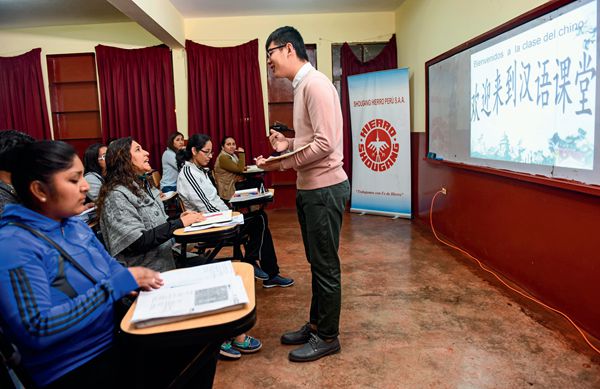New Era of China-Latin America Relations
China Today by WU HONGYING, January 23, 2017 Adjust font size:
China’s Latin America Policy for a New Era
President Xi delivered a speech to the Peruvian Congress entitled “Ushering in the Bright Future for China and Latin America,” expounding on China’s policies in Latin America. Xi reiterated in his speech that China will unswervingly support Latin American nations’ discovery of their particular development path in line with their national conditions, support the self-reliance and rejuvenation of Latin America, and give full play to Latin America in international and regional issues.
Xi also proposed boosting new growth through trade, investment, financial cooperation, industrial integration, and innovation. “The community of common destiny shared by China and Latin America” expresses the great aspiration to make China-Latin America cooperation the new model of South-South Cooperation.
In the coming five years, China’s import volumes are predicted to reach US $8 trillion, with utilized foreign capitals of US $600 billion, and its total foreign investment to reach US $750 billion. It will also be the source of 700 million outbound tourists. China will thus provide a wider market, ample capital, abundant products, and precious opportunities to the world as a whole, including Latin American countries. Xi’s speech thus not only showed the orientation of future China-Latin America cooperation, but also set down a blueprint for it.

Since October 2016, Chinese company Shougang Hierro Peru has offered free Chinese lessons for Chilean staff members and local citizens at the site of its mine in the Marcona District of Peru.
Furthermore, to highlight the important role of Xi’s speech in high-level exchanges, on November 24, the day of President Xi’s return from Latin America to Beijing, the Chinese government published a second white paper on Latin America and Caribbean areas – an additional policy document after an initial white paper in 2008.
The document gives a comprehensive explanation of China’s new objectives, proposals, and measures with respect to Latin America policy in the new circumstances. It proposes construction of a new pattern of China-Latin America relations based on sincere mutual political trust, win-win cooperation in economy and trade, collaboration on international affairs, mutual learning in cultural exchanges, and mutual promotion through comprehensive cooperation and bilateral relations – all contributing to build a community of common destiny.
The white paper also advises cooperation in nine areas, including politics, economy and trade, society, international collaboration, peace maintenance, safety guarantees, judiciary, and overall cooperation. The document, representing the high regard in which the Chinese government holds towards Latin America and their bilateral relations, aims to lead the China-Latin America comprehensive cooperative partnership towards a new stage, and to act as guidelines for China-Latin America relations in the new era.
China’s Role in Asia-Pacific Region
During the APEC meeting in Lima, President Xi attended the APEC CEO Summit and delivered a keynote speech that expounded the four aspects the Asia-Pacific Region should promote – an open and integrated economy, interconnectivity, reform and innovation, and win-win cooperation.
At the APEC Economic Leaders’ Meeting, President Xi delivered a keynote speech entitled “Forge Ahead into the Future for Progress and Prosperity in the Asia-Pacific.” In the speech he stressed that China would stay committed to taking economic globalization forward, increasing openness in the Asia-Pacific economy, breaking bottlenecks in regional connectivity, and blazing new trails in reform and innovation.
His new proposals indeed constituted China’s announcement to the world that it will strongly oppose protectionism in all forms, proactively promote and facilitate trade and investment in boundless areas; and unswervingly sustain world commerce and trade, as well as the globalization process.
President Xi appealed to all APEC members to transform consensus into actions and realize the Free Trade Area of the Asia-Pacific (FTAAP) at an early date. Guided by the Chinese government, the 24th APEC Economic Leaders’ Meeting approved the report on Asia-Pacific free trade area collective strategic studies, and agreed on the Lima Declaration on FTAAP.
The two documents set objectives and principles for the establishment of the FTAAP and mapped out possible paths. They also formulated action initiatives in various areas and established the progress reporting mechanism, so making breakthroughs in the establishment of the FTAAP. President Xi’s series of proposals are seen as a follow-up to the outcomes of the 2014 APEC meeting in Beijing and the 2016 G20 Summit in Hangzhou. “China’s Proposals” and “China’s Plans” – which contribute to the Asia-Pacific areas and beyond – received worldwide applause by virtue of China’s impact on global affairs. China is clearly not just a participant and builder in the Asia-Pacific region, but also a campaigner and leader of regional cooperation.
WU HONGYING is the director of the Institute for Latin American Studies at China Institute of Contemporary International Relations (CICIR).